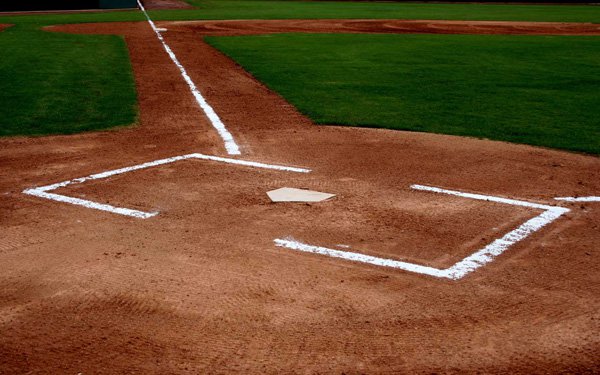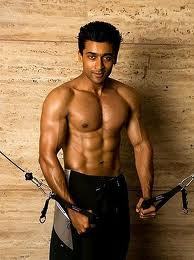
Funny when you are a young kid, how really historic moments may drop into your lap and you don't realize it. I was only 10 years old and living in Bakersfield, CA, when my Dad came to the breakfast table one morning, smiling and holding a pair of tickets in his hand. "Son," he said, "I've got two tickets to a baseball game at Sam Lynn Ballpark for today, would you like to go?" Well, I did play Little League Baseball and just a year before had become a fan of the Brooklyn Dodgers, after watching them win their First World Series. So, I said, "Sure." It wasn't until I was an adult, many years later, and was sorting through an old box of my belongings from my youth, that I realized, "My God, I got Willie Mays' autograph."
Now, let me put a couple of things in perspective. Bakersfield only had about 50,000 residents at the time. A Major League Baseball player coming to town was about as rare as seeing an eclipse with the naked eye. A whole team of Major Leaguers coming to Bakersfield to play an exhibition game was like stumbling over a gold nugget only to find an entire mine just beneath your feet. And yet, the Hall of Fame outfielder of the then New York Giants did come to town with a barnstorming group of ballplayers billed as, "Willie Mays Major League Negro-American All-Stars Tour."
The sad thing is I probably knew who WIllie Mays was, and that might have been the hook that convinced me to go to the game. But, truthfully, I am too old to remember. I do recall that Dad bought me a souvenir program for the game, and in it was a page which about half way down had the word "Autographs" printed on it over a large area of empty white space. I cannot tell you much about the game - who won it, who made the great plays, or if Mays hit a dramatic homer. Like I said, I was 10 years old. I Checked with The Bakersfield Californian, the city's only major daily. It does not have a record of the game. Only by finding a Willie Mays biography on the less than reliable Wikipedia did I discover that Mays did indeed go on a tour with black Major Leaguers that year.
I do know that I spent a considerable amount of time sticking that program and a blue ink pen in front of every ballplayer I could get close to that day. Before I get to the players, how about some history? Only nine years before Mays and company came to Bakersfield, there were no black players in Major League Baseball. The Color Line was not broken until the Brooklyn Dodgers signed Jackie Robinson to play for them in 1947. Rosa Parks' refusal to give up her bus seat in Birmingham predated Mays' visit by only a year. Governor George Wallace would not block the entrance to black students trying to enter the University of Alabama for the first time until seven years later in 1963. Equal rights for African-Americans would not be achieved until President Lyndon Johnson signed the Civll Rights Act of 1964.
There was plenty of racial turbulence around the country and more to come after that game played in Bakersfield. Much has been said of Mays as a ballplayer, but to take an all-black team on a series of exhibition games in cities around the country, during that time in history, showed how much of a forward-thinker he was, too. The saddest thing is that he had to do it at all. One other detail about the game in Bakersfield - the opposing team was comprised of all-white players, mostly minor leaguers. Segregation was still alive outside Major League Baseball - matching race against race - not on the streets but inside a ballpark.
Here is how Wikipedia referred to the tour. "1956 Willie Mays Major League Negro-American All-Stars Tour. In 1956, Mays got many of Major League Baseball's biggest black stars to go on a tour around the country after the season had ended to play exhibition games. While much of the tour has gone undocumented, one venue where the tour made a stop was at Andrews Field, located in Fort Smith, Arkansas, on October 16. Among the players to play in that game were Willie Mays, Frank Robinson, Hank Aaron, Elston Howard, Monte Irvin, Gene Baker, Charlie Johnson, Sam Jones, Hank Thompson, and Joe Black." And of course, one of the undocumented cities was Bakersfield. After all, I have the autographs to prove it.
More information and insight about the tour can be found online on the Baseball History Blog. The information is about the 1955 and 1956 exhibition tours, which apparently took place in November one year and October in the other. It gives good glimpses into what the tour was all about. Some of the more enlightening information reveals that one reason the players agreed to play the exhibition games was so they could earn between $2,000-$4,000 for the month, which amounted to about 50 percent of what a Major Leaguer would make playing an entire 154-game schedule.
Speaking of schedules, the blog prints out the 1956 location of the exhibition games. All four in California - Los Angeles, San Franciso, Oakland and Los Angeles again - were all canceled, it says. Bakersfield is not mentioned on the schedule, which means it must have been added as an after thought to recoup some of the revenue lost by not playing the other California games.
But to dwell on the disparities of the time is not my goal. Instead, I would like to single out some of the black players who made that trip to Bakersfield, and who were kind enough to sign their autographs, allowing me, years later, to discover what accomplishments they made to the game of Major League Baseball. Consider for a moment that many of these men were well beyond their prime playing days after spending years in the Negro Baseball League - in many cases lying about their ages just for the chance to play in the Major Leagues. Many had what would have been Hall of Fame years while playing in the Negro League but did not have enough good years left when they got their chance in the Majors. Still, many did succeed, and those who did not made it possible for those who would follow to do so.
The Autographs
Willie Mays - What can I say about him that has not already been written? Let's enumerate some, anyway. They are worth repeating: 1951 National League Rookie of the Year, two-time National League MVP, 24 times a National League All-Star and twice the MVP of the game, 12-time Gold Glove winner and a man who amassed 660 homeruns in his career - fourth best of all-time, and Mays did it without performance enhancing drugs.
Jim Gilliam - He was the1953 National League Rookie of the Year, played 14 years as an infielder with the Brooklyn and Los Angeles Dodgers, was twice named to the National League All-Star team and was on four Dodgers World Series Championship teams. As a rookie with the Dodgers, he hit more triples, 17, than any Dodger since 1920, and in 1956, the same year he played the game in Bakersfield, Gilliam tied a Major League record that had stood since 1892, when he totaled an incredible 12 defensive assists in one game.
Joe Black - He was the 1952 National League Rooke of the Year and the first black pitcher to win a World Series game. His rookie year, Black won 15 games, saved 15 games, had an ERA of 2.15, and came within eight innings of being eligible to win the NL ERA title. He pitched six years in the Major Leagues. It might have been longer, but he was already 28 when he got his chance. He joined with Jackie Robinson to push for a pension plan for Negro League players and inclusion of those who played before 1947.
Gene Baker - If it were not for bad luck, Baker, a second baseman, would have gone down in history as the first African-American to play for the Chicago Cubs. He was the first to be put on the roster in 1953 but an injury prevented him from playing, and the honor went to Ernie Banks, who was called up later. Still, he and Banks (who played shortstop) became the first black double play combination in Major League Baseball. As a part-time player, he earned a World Series Championship ring with the 1960 Pittsburgh Pirates. A year later, the Pirates made him the first black minor league manager, where he also played and batted.387 for the Class D Batavia Pirates.
Wes Covington - He played 10 years in the Majors as an outfielder, none bigger in terms of dramatics than the year 1957. Called up by the Milwaukee Braves with a little less than half the season already gone, Covington, playing in the same outfield with Henry Aaron, hit.284 with 21 homers and 65 runs batted in. When the Braves went to the World Series that year, Covington made an impossible catch robbing the Yankees' Bobby Shantz of an extra basehit, and then drove in the winning run for the Braves. Covington crashed into the fence to steal a homerun from Gil McDougal and save Game Five for the Braves, who went on to win the World Series.
Al Smith - Although he played 12 years in the Majors, most of Smith's memorable moments came with the Cleveland Indians and the Chicago White Sox. Two years before the Mays All-Stars came to Bakersfield, Smith played against Willie in the 1954 World Series in which he led off the first game with a homerun. Smith also played in the 1959 World Series for the White Sox against the Los Angeles Dodgers. In all, he had eight World Series hits. He was also twice named to the American League All-Star Team.
George Crowe - He was a 30 year old first baseman, when he got his Major League chance with the Boston Braves. Crowe was a college graduate from the University of Indianapolis (known as Indiana Central College back then) and a gifted athlete in two sports. He was Indiana's first "Mr. Basketball." His biggest year was with the Cincinnati Reds in 1957, when he filled in for the injured Ted Kluszewski and hit 31 home runs at the age of 36. Crowe was named to the 1958 National League All-Star Team. At one-time, he held the Major League record for most pinch hit homeruns -14.
Humberto Robinson - He was a door opening pitcher. The first native-born player from Panama to make it to the Major Leagues, he was called up by the Milwaukee Braves in 1955. As such, he paved the way for many other Panamanians who followed, including standouts Carlos Lee, Dave Roberts, Manny Sanguillen, Hall of Famer Rod Carew and future Hall of Famer Mariano Rivera. He won 122 games in 10 minor league seasons. Robinson was a middle reliever for six years with four teams in the Majors. Robinson's integrity makes him a footnote in baseball history. While pitching for the Phillies in 1959, he refused a $1,500 bribe to throw a game and made sure the man who made the bribe was arrested.
Harry "Suitcase" Simpson - As an outfielder, he came up to the Majors in 1951 with the Cleveland Indians and played eight seasons with five different teams. Sportswriters nicknamed him "Suitcase" after a Toonerville Trolley character called Suitcase Simpson. He played on the 1957 New York Yankees World Series team. Manager Casey Stengel called him "the best defensive right fielder in the American League." The feat for which he is probably best remembered came on Aug. 26, 1952, when he broke up a no-hitter by Detroit Tigers' pitcher Art Houtteman with a two-out, ninth inning single.
Bennie Daniels - If nothing else, it appears Daniels, a starting pitcher, had a flare for pitching in landmark ballgames. He was still a minor leaguer playing for the Hollywood Stars of the Pacific Coast League, when he played in the Bakersfield game. The next year, 1957, he would be called up by Pittsburgh and spend 10 seasons with the Pirates and Washington Senators. Consider these landmark games in which he pitched: 1957 - started the last game ever played at Brooklyn's Ebbetts Field; 1960 - lost a one-hitter to the Dodgers and Sandy Koufax, but his hit broke up the no-hitter; 1962 - started the last game ever played at Griffith Field; 1962 - started the first game in history at D.C. Stadium (now called RFK Stadium) a five-hit, 4-1 win over Detroit.
Charlie White - His career as a Major League catcher was over by the time he played in the Bakersfield game. He played in only 62 games, backing up Milwaukee Braves' catcher Del Crandall from 1954-55. In total, White spent 13 years in the minor leagues. Yet, he had some history while in the Majors. White hit his first Major League homerun in the same game teammate Henry Aaron hit his first on April 23, 1954. Unlike Aaron, who would hit another 754 in his career, White never hit another one. His other claim to fame? He was Aaron's first Braves' roommate.
So, while some may regard my scrap of paper as a meaningless souvenir, to me, the history it reveals makes it a priceless treasure.
Beginning on your first climbing escapade


My opinion on Titleist AP2 712 Irons

Copyright © www.mycheapnfljerseys.com Outdoor sports All Rights Reserved